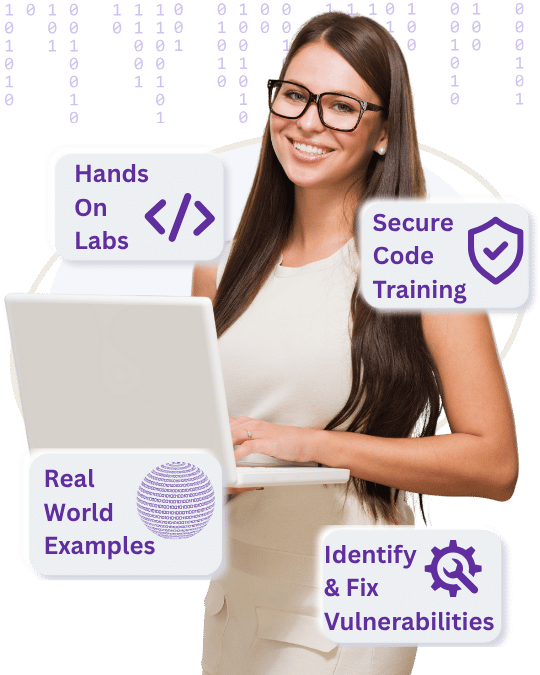Threat Modeling Workshop
Enabling Secure Design Thinking for Technical Teams
Why Threat Modeling?
In today’s fast-moving software development landscape, most security issues aren’t introduced through exotic hacks or advanced exploits—they’re baked into the system from the start. Design-level flaws are often the root cause of real-world breaches, and once they’re in, they’re hard to detect and even harder to remove.
That’s why threat modeling matters.
Threat modeling helps teams think critically about how systems might be attacked and where the biggest risks lie—before a single line of code is written. It’s a structured way to look at architecture through a security lens, and it enables teams to spot design flaws early, when they’re cheapest to fix and most impactful to address.
Yet, despite its importance, many teams don’t know where to begin—or how to apply it consistently.
This workshop is designed to close that gap.
Who Is This For?
This is not an introductory security class. It’s designed specifically for:
- Software architects who influence system design decisions
- Senior developers or tech leads involved in planning and reviewing solutions
- Engineering managers and platform owners accountable for system resilience
- Security champions who want to bring threat modeling into their teams
- DevSecOps and SRE leads looking to strengthen design-stage defenses
If your team builds systems that matter—whether in fintech, healthcare, SaaS, or IoT—this workshop helps your leaders build them more securely.
What This Workshop Covers
This isn’t a slide-heavy lecture. It’s a practical, structured, and discussion-led session with live architecture diagrams, team exercises, and examples drawn from your world.
1. Understanding the Basics
- What is threat modeling, and why does it work?
- Real-life case studies where better design could have prevented security failures
- Core concepts: assets, actors, data flows, attack vectors, and trust boundaries
2. Methodologies that Work in the Real World
- STRIDE: A structured model that maps threats to impact
- DREAD, Risk Matrix, and impact scoring
- Attack Trees and “what could go wrong” discussions
- How to pick a methodology that fits your team and systems
3. Hands-On Modeling
- Building threat models from system diagrams
- Identifying key threats to services, APIs, data, infrastructure
- Assigning risk scores and mapping mitigations
- Writing actionable follow-ups as part of tech design
4. Bringing It Into Your Workflow
- How to fit threat modeling into Agile or DevOps without slowing teams down
- Running short threat modeling sessions during design or grooming
- Integrating into architecture review processes
- Building a reusable threat library across your org
Format and Flow
This is a two-part workshop format—each section builds on the last:
Day 1 – Foundation and Methods
Participants learn how to think through threat modeling problems using well-established approaches. We focus on real-world relevance, not academic theory.
Day 2 – Modeling Your Own Systems
Teams work hands-on with their own (or anonymized) architecture diagrams to model threats collaboratively, share perspectives, and walk away with real outcomes they can use on the job.
We provide all:
- Templates
- Threat modeling cheat sheets
- Risk scoring examples
- Reference checklists
By the end, your team will know how to run threat modeling sessions on their own.
What You’ll Walk Away With
By the end of this workshop, your team will be able to:
- Spot critical design-stage threats before they turn into vulnerabilities
- Apply practical methodologies like STRIDE in real-world systems
- Lead or contribute meaningfully to threat modeling discussions
- Connect technical risk to business impact
- Build security into design—not bolt it on afterward
Workshop Logistics
| Detail | Description |
|---|---|
| Duration | 1 to 2 days, depending on format and scope |
| Format | Instructor-led, live sessions (in-person or remote) |
| Group Size | Up to 25 participants |
| Audience Level | Intermediate to advanced (non-beginner) |
| Customization | Can be tailored to your tech stack and systems |
| Deliverables | Templates, threat model docs, scoring matrix, facilitator guide |
Why Teams Choose QuadraLogics
We’ve worked with architecture and platform teams at leading organizations to help integrate security into the design stage—where it belongs. Our trainers bring real engineering experience, not just theory. We’ve delivered similar workshops for global enterprises, fast-growing startups, and regulated industries alike.
Our approach is:
- Structured but flexible
- Expert but approachable
- Based on proven methods tailored to engineering realities
We speak engineering, not just security.
Ready to Take the First Step?
Whether you’re just getting started with threat modeling or looking to standardize it across your teams, this workshop can help you build security into your development culture—without slowing it down.
Contact us at info@quadralogics.com
Visit www.quadralogics.com
Build secure systems by design. Empower your architects to think like defenders.
Cybersecurity Training for Enterprises
Build resilience in your workforce with industry-focused,hands-on, practical cybersecurity programs.
Contact Us

